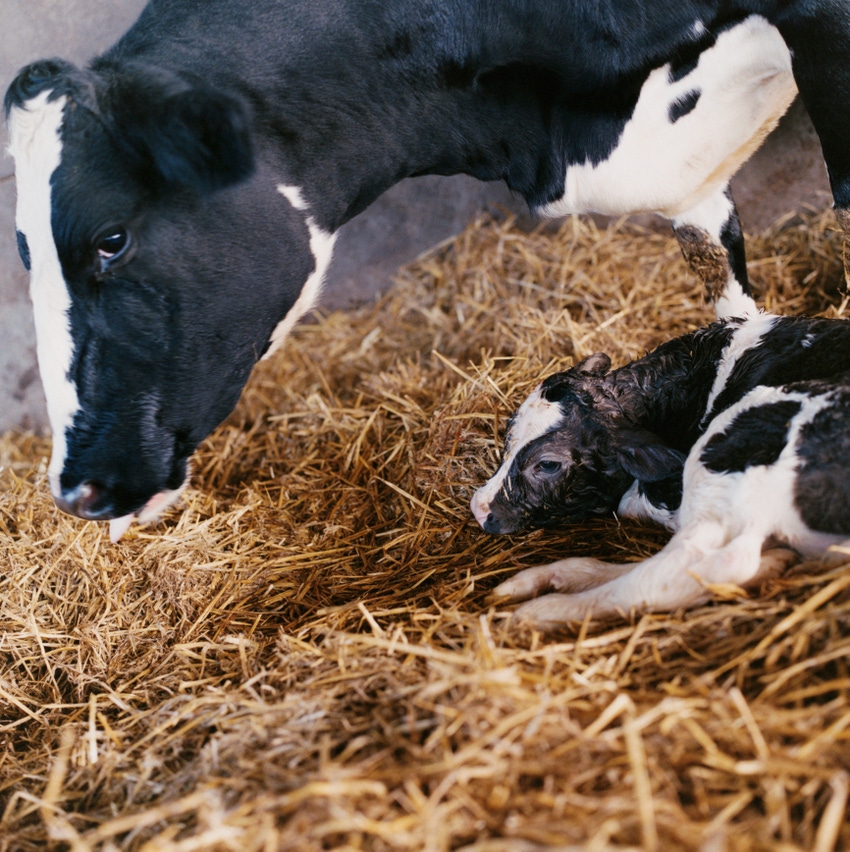Using killed vaccines during dry period can help cow and her calf fight off disease.
June 6, 2019

Killed vaccines, safely administered at the beginning of the dry cow period, can help keep the dam healthy and enhance the antibody levels found in the colostrum, according to an announcement from Boehringer Ingelheim.
Calves are not born with antibodies, so they must receive them from the colostrum they get at birth. Boosting the antibodies in the colostrum through vaccination has both short- and long-term payoffs.
“Immediately, that calf receives protection against the common viral and bacterial infections that are in its environment,” said Dr. Mark van der List with Boehringer Ingelheim. “Calves with successful passive transfer are less likely to develop scours or pneumonia and are at a reduced risk of mortality.”
To ensure that the newborn calf receives maximum benefits, it is recommended to collect the colostrum from the dam and feed to the calf as soon as possible. As the hours pass after calving, the colostrum can be diluted with regular milk, which can lower the concentration of antibodies, the announcement said.
Protection for cow
The fresh period is often a time of stress for cows. It can challenge their immune system and leave them susceptible to disease. By vaccinating cows during the dry period, they are more likely to enter the next lactation period with a robust immune system to fight off infectious disease threats, Boehringer Ingelheim said.
“If you decide to incorporate a killed vaccine into your protocol, make sure the one you choose is flexible and provides proven protection against bovine viral diarrhea virus types 1 and 2, infectious bovine rhinotracheitis, bovine respiratory syncytial virus and parainfluenza 3,” van der List said.
When using killed vaccines for the first time, it’s important to give two doses of the vaccine according to label directions, the company said. Failure to give a second dose within the correct time frame is a common reason a killed vaccine can fail.
“Producers should also incorporate a clostridial vaccine,” van der List added. “Clostridial spores thrive on dairy operations, and without vaccination, problems with blackleg or malignant edema could arise in cows with tissue injury from calving, and calves can suffer from enterotoxemia. Your veterinarian may also recommend leptospirosis vaccination.”
If scours have been an issue on your dairy, consider vaccinating the cows with a scours vaccine to make sure the calf receives those antibodies in the colostrum, he said.
“It’s important to remember that it takes more than vaccination to keep calves and cows healthy,” van der List said. “In order for a cow’s immune system to respond optimally to vaccination at dry-off, a cow must have a good transition period. During that time, proper nutrition, cow comfort and low stress will deliver a much healthier cow and calf.”
He encouraged producers to work with their veterinarian for guidance. A dry cow vaccination protocol will vary with management of the farm. “Review your cow and calf health protocols with your veterinarian every year to ensure they’re current and you’re covered for the challenges specific to your environment,” van der List concluded.
Source: Boehringer Ingelheim, which is solely responsible for the information provided and is wholly owned by the source. Informa Business Media and all its subsidiaries are not responsible for any of the content contained in this information asset.
You May Also Like

.png?width=300&auto=webp&quality=80&disable=upscale)

